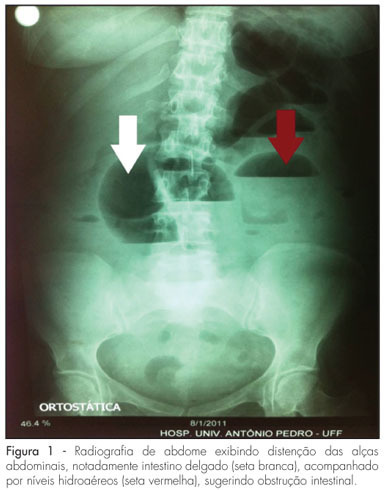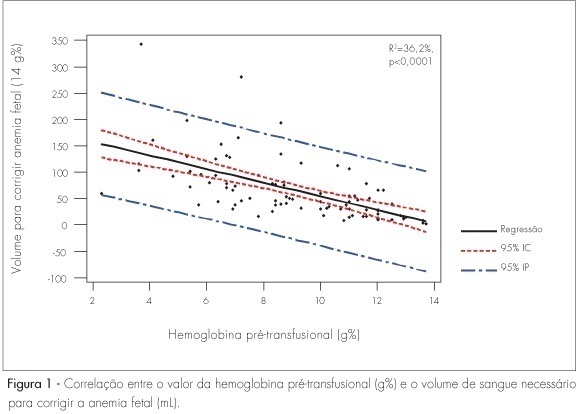Summary
Revista Brasileira de Ginecologia e Obstetrícia. 2006;28(3):195-204
DOI 10.1590/S0100-72032006000300010
Breast cancer is one of the most common malignancies among women. Its diagnosis and treatment have social, economic, physical, emotional/psychological and sexual repercussions. The main parameters used to assess the results of anticancer therapy are disease-free survival and overall survival. More recently, quality of life (QOL) has been considered an additional parameter. No consensus exists about the definition of QOL. However, most definitions take into account multidimensional and subjective aspects of QOL. The identification of factors related to QOL and comprehension of how these factors contribute to the perception of QOL are reasons for debate, since the concept of QOL is directly related to the social and cultural context in which the individual is inserted. Age at diagnosis, chemotherapy, type of surgery, climacteric symptoms, relationship between the couple, and sexuality are several factors associated with QOL in women with breast cancer. QOL associated with different antineoplastic therapies may help patients and physicians choose the best therapeutic modality. Towards this end, the current article addresses various aspects of QOL of breast cancer women, and presents the state-of-the-art knowledge on the topic.
Summary
Revista Brasileira de Ginecologia e Obstetrícia. 2002;24(3):195-199
DOI 10.1590/S0100-72032002000300008
Purpose: to evaluate, in a prospective way, the importance of ultrasound features of solid breast lesions in the differentiation between benign and malignant lumps. Methods: one hundred and forty-two patients with solid breast lesions, from the Department of Gynecology and Obstetrics of the Federal University of Goias (Brazil), were included in the trial. All ultrasound examinations were performed by a training doctor, always supervised by an experienced professional. The characteristics of the lesions studied were: shape, retrotumoral echoes, internal echoes, oriented diameter, halo of bright echoes and Cooper ligaments. Each of the ultrasound features was compared to the results of the histological examination. Results: among the 142 patients included in the trial, 90 (63%) had their lesions excised, and 77 (86%) had pathologic diagnoses of benign tumors and 13 (14%) of malignant tumors. The following characteristics were statistically significant in the diagnosis of the breast cancer (c²): masses with retrotumoral shadowing (p=0.0001), irregular shape (p=0.0007), heterogeneous internal echoes (p=0.0015) and vertically oriented - taller than wide (p<0.0001). The presence of halo of bright echoes anterior to the lump and the presence of wider Cooper ligaments were not related to the correct diagnosis of malignancy in this trial. Conclusion: ultrasound is a diagnostic method that can help physicians between the differentiation of benign and malignant breast lumps. The presence of retrotumoral shadowing, irregular shape, heterogeneous internal echoes and vertical orientation - lesions taller than wide - were related to the pathologic diagnosis of breast malignancies.
Summary
Revista Brasileira de Ginecologia e Obstetrícia. 2017;39(4):195-198
A pregnancy complicated by typical hemolytic uremic syndrome (HUS) and hemolysis, elevated liver enzymes, low platelets (HELLP) syndrome is reported. At 20 weeks of gestation, a case of HUS was diagnosed, with Shiga toxin-producing Escherichia coli identified. Plasmapheresis allowed continuation of the pregnancy for 5 weeks. Superimposed preeclampsia and HELLP syndrome were diagnosed after the establishment of nephrotic range proteinuria, hypertension and recurrence of hemolysis. This is a singular case, as it demonstrates that HELLP syndrome can superimpose upon HUS, a fact that can impact future research on reproductive immunology. It also reminds clinicians that the overlapping of clinical and laboratory findings in HELLP syndrome makes the diagnosis of other thrombotic microangiopathies during pregnancy a clinical challenge.
Summary
Revista Brasileira de Ginecologia e Obstetrícia. 2011;33(4):196-204
DOI 10.1590/S0100-72032011000400008
The Crohn's disease, a form of inflammatory bowel disease, is frequent in women of childbearing age. Its management requires greater attention during pregnancy. We report a case of refractory Crohn's disease in a pregnant patient that evolued to ileocolectomy at puerperium. The literature regarding pregnant patients with Crohn's disease was reviewed, including counseling of patients and investigation of active disease, and the existing data was summarized on the safety of medications used to treat Crohn's disease in pregnancy and breastfeeding.

Summary
Revista Brasileira de Ginecologia e Obstetrícia. 2011;33(8):196-200
DOI 10.1590/S0100-72032011000800005
PURPOSE: To estimate the prevalence of asymptomatic bacteriuria among pregnant women attended at our university prenatal care clinic and to identify probable clinical predictors. METHODS: Across-sectional study was carried out from August 2008 to October 2009 at the Bahiana School of Medicine involving 260 pregnant women without symptoms of urinary tract infection. The following exclusion criteria were considered: presence of clinical signs such as fever, dysuria, vesical tenesmus, lumbar pain, history of active genital bleeding or loss of amniotic fluid, use of antimicrobial agents in the 30 days prior to sample collection, and refusal to participate in the project. The presence of single pathogen bacterial colonization ≥10(5) CFU/mL in the urine sample obtained from the middle jet was considered to be a dependent variable. The predictive factors evaluated were as follows: age, race, marital status, schooling, gestational age, hypertension, anemia, vaginal infection, sickle cell trait and previous history of urinary tract infection, urinary symptoms related to the lower urinary tract (frequency, urgency and nocturia) and data obtained from the urine summary (leukocyturia, increased bacterial flora, hematuria, proteinuria, and presence of nitrite). Statistical analysis was performed with the Statistical Package for the Social Sciences (SPSS) software version 13.0 and the level of significance was set at p<0.05. Prevalences were expressed as percentage, and the confidence interval considered was 95% (95%CI). RESULTS: The prevalence of asymptomatic bacteriuria was 12.3% (95%CI=8.3-16.3). E. coli was the most frequent etiologic agent (59.4%). Logistic regression indicated that urgency to void (OR=5.99; 95%CI=2.20-16.31; p<0.001); leukocyturia (OR=2.85; 95%CI=1.04-7.83; p=0.042) and increased bacterial flora (OR=10.62; 95%CI=3.95-28.56; p<0.001) were independent predictors of asymptomatic bacteriuria. CONCLUSION: The prevalence of asymptomatic bacteriuria in the studied population was high. The prediction score created for the final logistic regression model has an accuracy of 91.9% for bacteriuria.
Summary
Revista Brasileira de Ginecologia e Obstetrícia. 2008;30(4):196-200
DOI 10.1590/S0100-72032008000400007
PURPOSE: to obtain an equation to estimate the volume of red blood cells concentrate to be infused to correct anemia in fetuses of pregnant women with Rh factor isoimmunization, based in parameters obtained along the cordocentesis previous to intrauterine transfusion. METHODS: a transversal study analyzing 89 intrauterine transfusions to correct anemia in 48 fetuses followed-up in the Centro de Medicina Fetal do Hospital das Clínicas da Universidade de Minas Gerais. The median gestational age at the cordocentesis was 29 weeks and the average number of procedures was 2.1. Fetal hemoglobin was assayed before and after cordocentesis, leading to the volume of transfused red blood cells concentrate. The determination of an equation to estimate the blood volume necessary to correct the fetal anemia was based in the blood volume necessary to raise the fetal hemoglobin in 1 g% (the difference between the final and the initial hemoglobin concentration divided by the transfused volume) and in the volume of the amount necessary to reach 14 g%, in the multiple regression analysis. RESULTS: the concentration of pre-transfusion hemoglobin varied between 2.3 and 15.7 g%. The prevalence of fetal anemia (Hb<10 g%) was 52%. The regression equation obtained in the determination of blood volume necessary to reach the concentration of 14 g% of Hb was: transfusion volume (mL)=18.2 - 13.4 x pre- intrauterine transfusion hemoglobin + 6.0 x gestational age in weeks. This equation was statistically significant (p<0.0001). CONCLUSIONS: the study has shown that it is possible to estimate the transfusion volume necessary to correct fetal anemia, based on easily obtainable parameters: gestational age and level of pre-transfusion hemoglobin.

Summary
Revista Brasileira de Ginecologia e Obstetrícia. 2018;40(4):196-202
To evaluate the association between hormonal contraception and the appearance of human papillomavirus HPV-induced lesions in the uterine cervix of patients assisted at a school outpatient clinic - ObGyn outpatient service of the Universidade do Sul de Santa Catarina.
A case-control study, with women in fertile age, performed between 2012 and 2015. A total of 101 patients with cervical lesions secondary to HPV were included in the case group, and 101 patients with normal oncotic colpocytology, in the control group. The data were analyzed through the Statistical Package for the Social Sciences (SPSS, IBM Corp. Armonk, NY, US) software, version 24.0, using the 95% confidence interval. To test the homogeneity of the proportions, the chi-square (χ2) test was used for the qualitative variables, and the Student t-test, for the quantitative variables.
When comparing the occurrence of HPV lesions in users and non-users of combined oral contraceptives (COCs), the association with doses of 0.03 mg or higher of ethinylestradiol (EE) was observed. Thus, a higher probability of developing cervical lesions induced by HPV was identified (odds ratio [OR]: 1.9 p = 0.039); and when these cases were separated by the degree of the lesion, the probability of these patients presentingwith lowgrade squamous intraepithelial lesion was 2.1 times higher (p = 0.036), but with no impact on high-grade squamous intraepithelial lesions and the occurrence of invasive cancer. No significant differences were found in the other variables analyzed.
Although the results found in the present study suggest a higher probability of the users of combined hormonal contraceptives with a concentration higher than 0.03 mg of EE to develop low-grade intraepithelial lesions, more studies are needed to conclude causality.